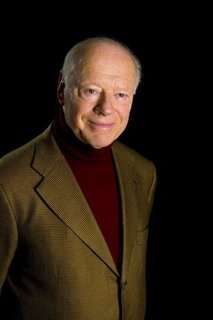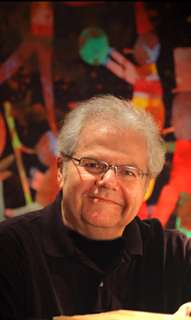|
Back
Never Never Going Gentle Into That Good Night New York
Avery Fisher Hall, Lincoln Center
10/21/2013 - & October 15 (London), 20 (New York), 2013
Wolfgang Amadeus Mozart: Piano Concerto No. 27 in B-flat major, K. 595
Dmitri Shostakovich: Symphony No. 15 in A Major, op. 141
Emanuel Ax (Pianist)
London Symphony Orchestra, Bernard Haitink (Conductor)

B. Haitink (© Clive Barda)
When Bernard Haitink conducts Dmitri Shostakovich’s Fifteenth Symphony, the reward come by ignoring the composer’s famous signposts. Yes, we all know the quotes from William Tell, the motifs from the Ring, the song of Glinka, the first three notes of Tristan, the composer’s eponymous acronyms, the name of Bach etc etc.
But Mr. Haitink certainly is aware that these markers are only idols, relics, dramatic vitraux in the Shostakovich cathedral. And as one of the greatest Mahler masters today, Mr. Haitink equally understands that the glory of this so-puzzling symphony lies in the shadows of uncertainty, not the all too blatant, quotations.
As in Mahler, we may revel in the references, but they are no more than signposts on an all too personal Via Dolorosa. The real value lies in the ineffable stuff in between. Like Mahler, those flights in the strings, those sudden explosions in the brass, and, as in Mahler, the juvenilia tunes on marimba and xylophone are inexplicable and far far more rewarding.
Bernard Haitink last night knew how to make them dominate a very stirring work.
The conductor led the London Symphony Orchestra (LSO) last night in two “final” works. Mozart’s K. 595 Piano Concerto was the last of the composer’s genre, as the Fifteenth was Shostakovich’s final symphony, written even as he was ailing. But neither composer was ready to go gentle into that good night. Whatever their physical or financial conditions, their true lives were in their inspirations, and neither of them were ready to throw away their arcane knowledge.
In the Shostakovich, taking the 45-odd minutes of the second half, Maestro Haitink made no allowances for the mysteries of the work. And while the opening movement (the tragic Russian version of Toy Story) had its parodies and entertainments, Mr. Haitink was looking for the architecture, allowing the familiar quotes so that we were diverted for the great climaxes of brass and strings.
But the heart of the symphony is the Adagio, where Mr. Haitink kept his LSO at an almost static tension. The symphony may be Mahleresque, but Mahler’s slow movements were usually melodic, sometimes even melancholy. Mr. Haitink gave no quarter to the feelings of death and tragedy. The ravishing LSO strings were tensed, the long solo by Concertmaster Roman Simovic was poignant, the conducting was on a hairsbreadth of nearly breaking down. Yet the endless Siberian ice was as beautiful as it was desolate. The one quote (from the Eleventh Symphony) was not a memory as much as a new development of an old inspiration. This, rather than the parodies or the crescendos, was the core of the symphony, and Mr. Haitink understood that not a single phrase was without meaning.
The third movement was typical Shostakovich scherzo, but the composer eschewed his usual blazing finales for a slow quiet ending. One still remembers the fine solos from the first chair cello, trumpet, flute, piccolo, violin and Sousa-sized percussion battery. But by the end, Haitink had produced a work where joy and delight were hushed by the Lento and Adagio of death.

E. Ax (© Maurice Jerry Beznos)
Mozart was of a different stripe, and he rarely hinted at desolation. One could say of this final concerto that he needed its sublime (if moderate) joys as a wall against his own personal challenges.
The LSO wisely kept most of its strings, but so fine was the balance that the pair of horns and oboes and single flute were never obscured. If Maestro Haitink is the most elegant of conductors, and pianist Emanuel Ax can have his humor, the result was not a rivalry but a sympathetic fulness. Mr. Ax was suitably elegant in the opening, while allowing the orchestra its inner moments for the Larghetto.
The finale, though, had a moment of sublimity shared by pianist, orchestra and conductor. Mr. Ax had just finished Mozart’s cadenza, but rather than relishing the moment, he muted the last measures so that the orchestra could enter, almost unnoticed and continue the dancing, as if nothing miraculous had happened.
It was, of course, a miracle, that we should have such musicians on stage displaying two composers who could transform their ephemeral human emotions into an entity for eternity.
Harry Rolnick
|